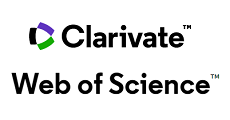Employing fly ash and FCC catalyzer waste in recovering chrome (III) from liquid effluent emitted by tanneries
Utilización de ceniza volante y catalizador FCC gastado en la recuperación de cromo (III) de los efluentes líquidos de las curtiembres
DOI:
https://doi.org/10.15446/ing.investig.v25n1.14619Keywords:
chrome removal, fly ash, FCC catalyser, tannery effluent, adsorption (en)remoción de cromo, ceniza volante, catalizador FCC, efluentes de curtiembres, adsorción (es)
Downloads
The present work studies the possibility of using two solid industrial wastes TERMOPAIPA'S fly ash and ECOPETROUS FCC catalyzer waste in removing and recovering chrome from tanneries’ liquid effluent. Fly ash was subjected to two alkaline hydrothermal treatments for obtaining zeolytic structures having better properties; waste catalyser was calcined for eliminating surface coke. Solids were characterized following treatment including DRX, BET area and CEC. A colorimetric method was standardized for determining chrome in solution; a response surface experimental design was implemented for finding optimum removal conditions. The most efficient adsorbent was fly ash treated with increased NaOH concentration; optimum conditions for removing chrome were: 58 minutes at 36°C, 5.9 pH and 31% w/v solid removal. When reused, it was found that the two batches of treated fly ash became saturated following 6 cycles of use, whilst original ash and FCC catalyzer became saturated the second time they were used. Four de-absorbent agents were used for recovering chrome from adsorbent product, H2SO4 0.6 M being the best. Field trials showed that removal efficiency became reduced by the effect of other contaminants, depending on the solution’s initial concentration.
El presente trabajo estudia la posibilidad de utilizar dos desechos sólidos industriales: la ceniza volante de TERMOPAIPA y el catalizador de equilibrio gastado (FCC) de ECOPETROL, en la remoción y recuperación de cromo de los efluentes líquidos de las curtiembres. La ceniza volante se sometió a dos tratamientos hidrotérmicos alcalinos para obtener estructuras zeolíticas de mejores propiedades, y el catalizador gastado se calcinó para eliminar el coque de su superficie. La caracterización de los sólidos que se obtuvieron luego de los tratamientos incluyó DRX, área BET y CEC. Se estandarizó un método colorimétrico para la determinación de cromo en solución y se implementó un diseño de experimentos del tipo superficies de respuesta para encontrar las condiciones óptimas de remoción. El adsorbente más eficiente fue la ceniza volante tratada con la mayor concentración de NaOH, y sus condiciones óptimas de remoción de cromo fueron 36°C, 58 minutos, pH de 5.9 y una relación sólido a solución de 31% p/v. En la reutilización se encontró que las dos cenizas volantes tratadas se saturan con 6 ciclos de uso, mientras que la ceniza original y el catalizador FCC se saturan en la segunda vez. La recuperación de cromo desde el adsorbente se intentó con cuatro agentes desorbentes, de los cuales el mejor fue el H2SO4 0,6 M. Finalmente, las pruebas de campo realizadas demostraron que la eficiencia de la remoción disminuye por el efecto de otros contaminantes y que depende de la concentración inicial de la solución.
References
Aggarwal, D.; Goyal, M. y Bansal, R.C., Adsorption of chromium by activated carbon from aqueous solutions. Carbon, Vol. 37, No 17, pp. 1989-1997, 1999. DOI: https://doi.org/10.1016/S0008-6223(99)00072-X
Apha 3500 - Cr D., “Método normalizado para la determinación colorimétrica de cromo en aguas”.
ASTM D1687- 84, “Standard Test Methods for Determination of Chromium in Water”.
Ávila, C. y Saavedra, N., “Factibilidad del empleo del catalizador FCC en una reacción de esterificación”, proyecto de grado en ingeniería química, Universidad Nacional de Colombia, Bogotá, 2003.
Bayat, B., “Comparative study of adsorption properties of Turkish fly ashes II. The case of chromium (VI) and cadmium (Il), Journal of Hazardous Materials, Vol. B95, pp. 275-290. 2002. DOI: https://doi.org/10.1016/S0304-3894(02)00141-3
Díaz, J. y Suarez, D., “Las cenizas volantes de carboeléctricas y su aplicación en la desulfurización de gases”, Laboratorio de Combustibles, Departamento de Química, Universidad Nacional, Bogotá, 1999.
Echavarría, A.; Moreno, M.; Ramírez, C.; Tamayo, C. y Saldarriaga, C., “Uso de bentonita en aguas residuales de curtiembres para la remoción de Cr(III)”, Revista Colombiana de Química, Vol. 27, No 1. 1998.
Gil Pavas, E., “Remoción de cromo utilizando mallas moleculares”, tesis de maestría en ingeniería química, Universidad Nacional de Colombia, Bogotá, 1997.
Gil Pavas, E. y Saldarriaga, C., Remoción de cromo de aguas residuales de curtiembres utilizando ceniza volante, Revista Facultad de Ingeniería Universidad de Antioquia, Vol. 10, No 16, pp. 25-29, 1998.
Gupta, V.; Gupta, M. y Sharma, S., “Process development for the removal of lead and chromium from aqueous solutions using red mud an aluminium industry waste”, Water Research, Vol. 35, No 5, pp. 1125-1134, 2001. DOI: https://doi.org/10.1016/S0043-1354(00)00389-4
Hu, Z.; Lei, L.; Li, Y y Ni, Y., “Chromium adsorption on high-performance activated carbons from aqueous solution”, Separation and Purification Technology, Vol. 31, No 1, pp. 13-18, 2003. DOI: https://doi.org/10.1016/S1383-5866(02)00149-1
Kocaoba, S. y Akcin, G., “Removal and recovery of chromium and chromium speciation with MINTEQA2”, Talanta, Vol. 57, No 1, pp. 23-30, 2002. DOI: https://doi.org/10.1016/S0039-9140(01)00677-4
Leal, J. y Rivera, D., “Remoción por adsorción de cromo y zinc en aguas residuales industriales de recubrimientos metálicos”, Proyecto de grado en ingeniería química, Universidad Nacional de Colombia, Bogotá, 1997.
Muthukumaran, K.; Balasubramanian, N. y Ramakrishna, T.V., “Removal and recovery of chromium from plating waste using chemically activated carbon”, Metal Finishing, Vol. 93, No 11, pp. 46-63, 1995. DOI: https://doi.org/10.1016/S0026-0576(05)80049-2
Peña, M.; Haraguchi, K. y Yamada, K., Estudio de utilización de cenizas volantes colombianas para una efectiva remoción de fosfatos en soluciones acuosas”, Ingeominas, Bogotá, 1995.
Pianeta, O. y Saavedra, J., “Estudios de adsorción de cromo, níquel y zinc en solución sobre vermiculita”, Proyecto de grado en ingeniería química, Universidad Nacional de Colombia, Bogotá, 2001.
Rengaraj, S.; Yeon, K. y Moon, S.h., “Removal of chromium from water and wastewater by ion exchange resins”, Journal of Hazardous Materials, Vol. 87, Nos 1-3, pp. 273-287. 2001. DOI: https://doi.org/10.1016/S0304-3894(01)00291-6
Sánchez, Francisco J., “Prácticas con Zeolitas”, Universidad Nacional de Colombia, Bogotá, 2003.
Xuan, X.; Yue, C.; Li, S. y Yao, Q., “Selective catalytic reduction of NO by ammonia with fly ash catalyst”, Fuel, Vol. 82, No 5, pp. 575-579, 2003. DOI: https://doi.org/10.1016/S0016-2361(02)00321-6
How to Cite
APA
ACM
ACS
ABNT
Chicago
Harvard
IEEE
MLA
Turabian
Vancouver
Download Citation
License
Copyright (c) 2005 Jeceny Amaya, Andrés Tristancho, Francisco José Sánchez Castellanos

This work is licensed under a Creative Commons Attribution 4.0 International License.
The authors or holders of the copyright for each article hereby confer exclusive, limited and free authorization on the Universidad Nacional de Colombia's journal Ingeniería e Investigación concerning the aforementioned article which, once it has been evaluated and approved, will be submitted for publication, in line with the following items:
1. The version which has been corrected according to the evaluators' suggestions will be remitted and it will be made clear whether the aforementioned article is an unedited document regarding which the rights to be authorized are held and total responsibility will be assumed by the authors for the content of the work being submitted to Ingeniería e Investigación, the Universidad Nacional de Colombia and third-parties;
2. The authorization conferred on the journal will come into force from the date on which it is included in the respective volume and issue of Ingeniería e Investigación in the Open Journal Systems and on the journal's main page (https://revistas.unal.edu.co/index.php/ingeinv), as well as in different databases and indices in which the publication is indexed;
3. The authors authorize the Universidad Nacional de Colombia's journal Ingeniería e Investigación to publish the document in whatever required format (printed, digital, electronic or whatsoever known or yet to be discovered form) and authorize Ingeniería e Investigación to include the work in any indices and/or search engines deemed necessary for promoting its diffusion;
4. The authors accept that such authorization is given free of charge and they, therefore, waive any right to receive remuneration from the publication, distribution, public communication and any use whatsoever referred to in the terms of this authorization.



























